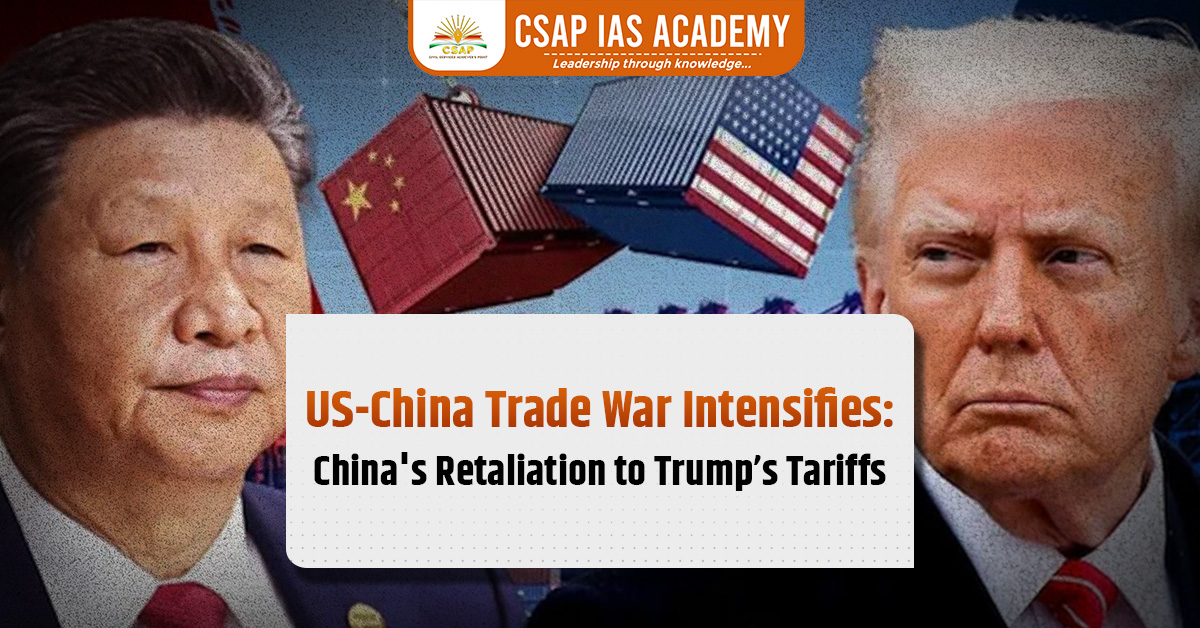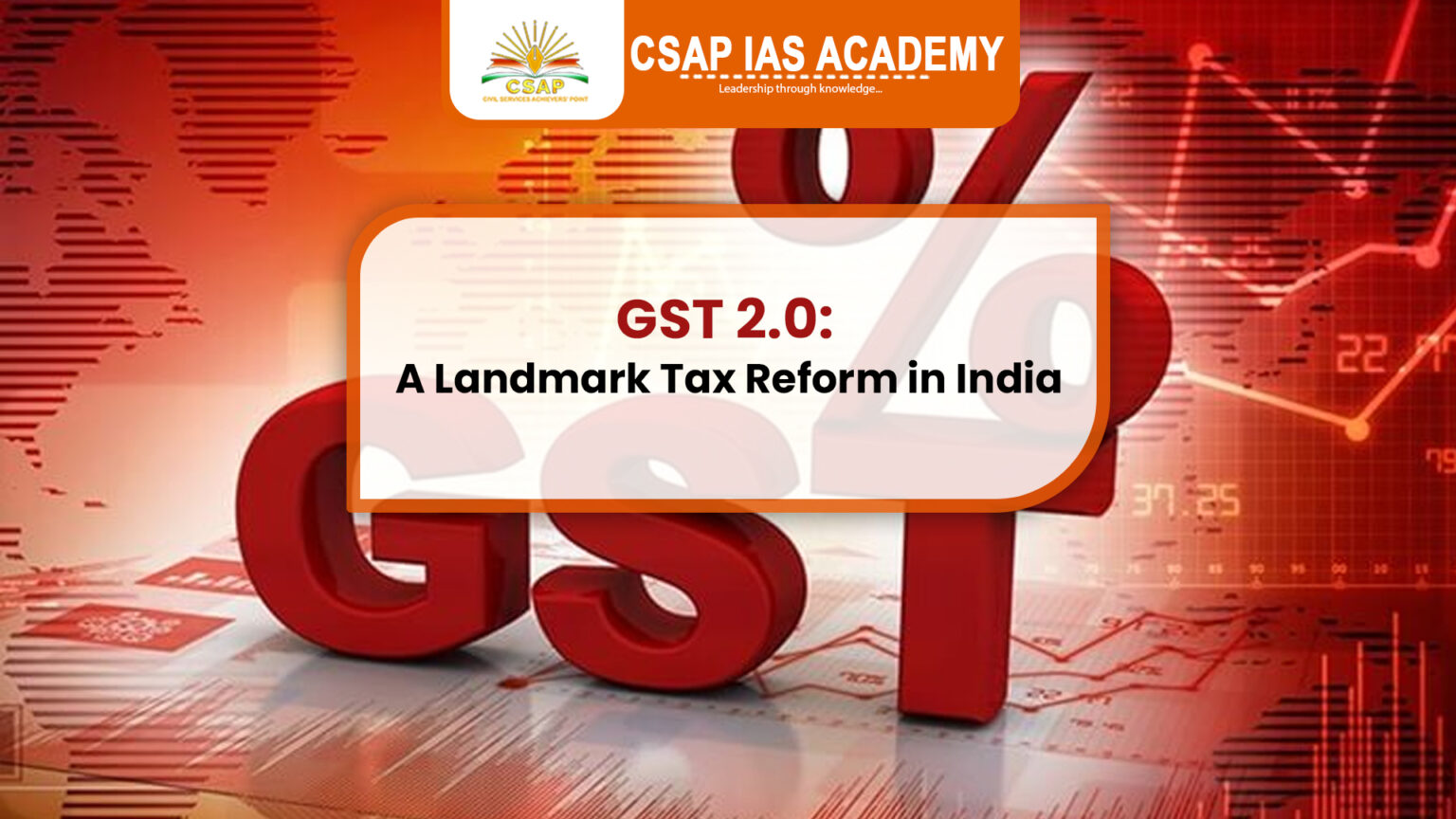The US-China trade war escalated sharply in April 2025, with China imposing a 34% tariff on all US goods in retaliation to fresh US tariffs announced by President Trump. This move signals a major disruption to global trade, impacting markets, supply chains, and emerging economies like India.
In this blog, we will discuss the background of the conflict, its global implications, and how India can navigate the shifting trade landscape amid rising economic uncertainty.
Why is the US-China trade war in News?
In April 2025, China imposed a 34% tariff on all US goods, following the announcement of reciprocal tariffs by United States President Donald Trump. The development marks a serious escalation in ongoing trade tensions between the two major economies and raises concerns about the onset of a broader global trade conflict.
Background of the US-China Trade War
The United States and China have witnessed fluctuating trade relations over the past decade. In January 2025, President Trump returned to office and adopted a firm approach to trade, targeting countries he accused of engaging in unfair practices. In February and March 2025, the United States imposed two rounds of 10% additional tariffs on Chinese imports. These actions were officially presented as a response to the continued export of illicit fentanyl and its derivatives from China, which has been a matter of public health concern in the United States.
On April 3, 2025, President Trump announced a fresh round of tariffs amounting to 34% on Chinese imports, citing asymmetry in the global trade regime and presenting data to argue that other nations imposed significantly higher tariffs and trade barriers on US goods.
China’s Response
In immediate retaliation, China’s State Council Tariff Commission announced the imposition of a 34% tariff on all American goods entering the Chinese market. This marked the first full-scale countermeasure taken by a major trading nation in response to the United States’ latest tariff policy.
In addition to tariffs, China announced restrictions on American companies. Sixteen US firms were added to China’s export control list, and eleven others were designated as “unreliable entities”. The Chinese Ministry of Commerce stated that these actions were taken in accordance with domestic law, to protect national security and to fulfill international obligations, including those related to non-proliferation.
China also accused the United States of engaging in unilateralism and acting in violation of international trade rules, describing the US actions as a form of economic coercion.
Significance of the Development
Potential for a Global Trade War
The tit-for-tat imposition of high tariffs may severely disrupt global trade flows. With both the United States and China serving as major markets and suppliers, such actions could lead to economic uncertainty, volatility in financial markets, and strained supply chains worldwide.
Impact on Global Institutions
These developments challenge the credibility and authority of institutions such as the World Trade Organization (WTO). Unilateral imposition of tariffs undermines the principles of multilateralism and rules-based global trade.
Implications for Emerging Economies
Countries like India may face both challenges and opportunities. On one hand, global economic instability can dampen growth and trade prospects. On the other, supply chain disruptions may open new export opportunities and avenues for trade diversification.
Shifting Trade Alliances
Trade tensions may accelerate the formation of new regional and bilateral trade alliances. Countries may seek to reduce dependence on dominant economies by expanding cooperation with alternative partners.
Implications for India
India must remain vigilant about developments in global trade policy. As an economy that is integrated with the global market, India needs to strengthen its trade safeguards, diversify its export base, and reinforce its role in regional trade groupings.
China’s institutionalisation of tools such as the “Unreliable Entity List” and export control regulations reflects a trend of using national laws for economic retaliation. India may need to study these models for possible adaptations in its own economic security framework.
At the same time, India must engage actively in multilateral forums to ensure the protection of its interests and advocate for reforms in global trade governance.
Conclusion
The sharp escalation in US-China trade tensions has significant global implications. Both economic giants appear committed to their respective policy paths, with little sign of immediate de-escalation. For the rest of the world, especially emerging economies like India, this is a crucial period to focus on economic resilience, diplomatic engagement, and trade diversification.
Read: India China Relations
Download App:









